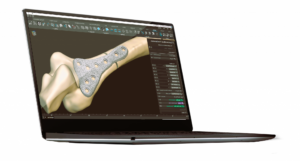Few would contest the triad aspiration of health care—enhanced individual health, upgraded societal health care, and contained expenditures. Realizing these aspirations necessitates extensive deliberations, investigations, and propositions to ascertain optimal approaches.
One thing is unequivocal: for reforms to yield fruit, all stakeholders must witness tangible advantages. Harold Miller articulated this sentiment in a report for the Network for Regional Healthcare Improvement, emphasizing that expecting health care providers to deliver higher value care, enhance quality, or curtail spending without adequate financial backing from the payment system is unrealistic. Conversely, expecting patients, businesses, or government to incur additional or alternative expenses to surmount these barriers without assurances of improved care quality or reduced spending is equally impractical.
Achieving the triad objectives while accommodating the diverse needs of stakeholders cannot occur instantaneously. With diverse models under consideration and experimentation, progress toward the objective will necessitate a combination of several approaches, implemented incrementally.
When the signs became evident—or, rather, enshrined in the Affordable Care Act of 2010 (ACA)—APTA took action to prepare physical therapists (PTs) and physical therapist assistants (PTAs) for forthcoming changes. The association initiated a coordinated effort to ensure that as health care progresses toward fulfilling the triad aims, PTs are duly acknowledged and remunerated for their clinical judgment and decision-making, not solely for their procedural undertakings.
A component of this coordinated effort entails the introduction of new CPT codes in physical medicine and rehabilitation—the domain encompassing physical therapy’s 97000 series of codes—proposed by APTA and others. These codes aim to transition from a procedure-centric classification system to one that elucidates the complexity of the patient’s condition and the level of clinical judgment required by the PT.

To provide insight and correlate with other payment trends contributing to the shift away from the fee-for-service model toward value-based payment, here are five key points to grasp regarding payment reform for physical therapist services.
- The proposed CPT coding modifications are intertwined with other endeavors constituting comprehensive reform. While the association’s ongoing proposal for alterations to CPT codes for physical therapy evaluation and intervention is a prominent manifestation of APTA’s payment reform endeavors, it is just one facet of the broader initiative. The new codes spawn several ancillary initiatives on the path to payment reform. One such initiative pertains to quality measures. APTA contends that the proposed codes align more effectively with measurement tools—both existing and potential—that can furnish essential data on patient outcomes from physical therapist evaluation and treatment. Quality programs will persist in advancement, as CMS views them as crucial for addressing the triad question: “Is the patient improving?”
Data derived from quality programs will facilitate the evolution of payment into an episodic or bundled payment model, deemed by many as the optimal model to achieve the triad aims. However, lacking sound data, it will be challenging to develop episodic models that hold providers accountable for their services. Herein lies the significance of another notable APTA reform initiative: the Physical Therapy Outcomes Registry. Once widely adopted, the registry will furnish the profession with vital information, such as the frequency of visits for specific episodes and patterns of patient complexity.
Do you like the article? Read about Robotics in Rehabilitation.
Standardization in data reporting is imperative for its efficacy in assessing service quality. Hence, another realm of payment reform monitored by APTA is post-acute care. The association endorsed the Improving Medicare Post-Acute Care Transformation (IMPACT) Act of 2014, which advocates for standardized quality reporting across various hospital types.
Lastly, APTA persists in advocating for the repeal of the therapy cap by replacing it with payment reform provisions. The recent extension of the exceptions process through calendar year 2017 must be the final extension, and the therapy cap must be abolished.
- CPT codes are designed to evolve, and the proposed physical therapy codes are not intended to remain static. The proposed evaluation and intervention codes do not signify the culmination of the coding journey. They represent incremental steps in a transition period from fee-for-service to, ideally, an episodic payment model. This concept is not unprecedented; it is inherent in the nature of CPT codes. The primary purpose of the CPT coding system is to adapt as practice evolves, ensuring it accurately reflects the services rendered. Numerous CPT codes undergo revision or enhancement almost annually.
It is time for physical therapy to modernize its coding system to align with other progressive professions. For instance, the psychiatric profession revamped its coding structure in 2013, incorporating the complexity of the patient’s condition into its codes. APTA is pursuing a similar approach with physical therapy codes. Codes should depict genuine patient management, not merely a collection of care “widgets.”
Similarly, physical therapy codes should not be solely time-based. The duration a PT spends with a patient does not necessarily correlate with the complexity of the patient’s condition or the intensity of the PT’s clinical judgment for evaluation or treatment. Consider spinal manipulation: it is a brief procedure but demands a high level of judgment and skill. Conversely, a patient with severe impairments may undergo a brief treatment session due to intolerance to prolonged sessions. In such cases, the PT exercises judgment to avoid exacerbating the patient’s condition. Conversely, a young athlete with a simple ankle sprain may tolerate longer sessions, but the treatment is routine.
- Transitioning directly from the current fee-for-service model to episodic payment is impractical. As much as APTA and other stakeholders aspire to embrace the “gold standard” of an episodic payment model, it cannot be achieved overnight. As noted earlier, coding reform must synchronize with other activities propelling the profession toward payment and health care reform. All components must align synergistically. Advancing one component too far ahead will not expedite the process if others are not in place. CMS lacks the requisite data to support episodic models specific to physical therapy. Pilot programs, such as the Comprehensive Care for Joint Replacement Model (CJR), are testing the waters, and private payers are also exploring models.

An analogy elucidates this point: the CPT coding system serves as the infrastructure of health care services. Other aspects of health care reform—quality measures, patient outcomes, patient and provider engagement—will build upon this infrastructure as mechanisms for obtaining information evolve and essential data is gathered. Meanwhile, the infrastructure remains indispensable for reporting current services. Continuing the analogy, the plumbing and wiring must align with the current equipment and technology in use. If the infrastructure remains outdated, efforts to implement advanced systems will falter. Hence, the proposed CPT codes are intended to propel the profession forward to the extent it is presently prepared. Codes can be revised as necessitated by further developments.
- Inaction invites intervention from CMS, which may not align with our interests. Delaying initiatives entails risks. For instance, APTA closely monitors CMS’s initiative to review potentially misvalued CPT codes. The ACA mandates the agency to identify, in its annual physician fee schedule rules, “potentially misvalued” codes—codes whose values may no longer be appropriate and are subject to review. Ten physical therapy codes (among 103 total) are on the misvalued codes list for 2016. While only a few codes may undergo revaluation, any of the codes in the Physical Medicine and Rehabilitation family—the 97000 codes—could be subject to review, given their association with the identified codes.
Coding reform, once new codes are implemented, would obviate any value changes resulting from the review. The old codes would be retired, and values would be determined for the new codes replacing them.
As the national association setting standards for the physical therapy profession, APTA has the responsibility and obligation to participate in decisions shaping future practice and payment. We must not be relegated to the sidelines.
- Cohesive advocacy from the profession will expedite progress. Payment reform transcends APTA; it is a commitment to positioning the physical therapy profession for the future of health care. Recognizing the profession’s diversity, APTA acknowledges that the payment system must equitably serve all care settings, from community-based private practices to corporate health care systems. We engage in ongoing open dialogue with members and stakeholders to foster a community of professionals working collaboratively. Presenting a unified front is the most effective strategy to influence policy makers tasked with determining the fate of coding proposals for physical therapist services. It is how we demonstrate the value of physical therapy in advancing the triad aims of health care.
Latest Medicare physician pay cut shows desperate need for overhaul | American Medical Association (ama-assn.org)




